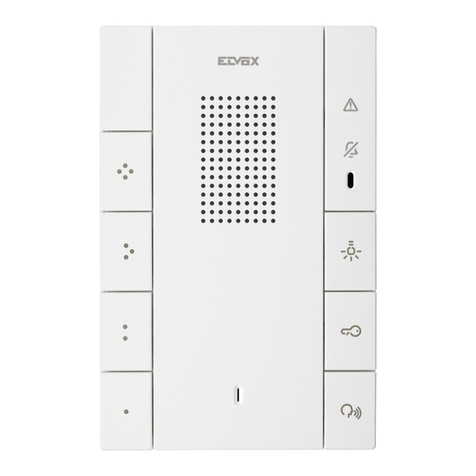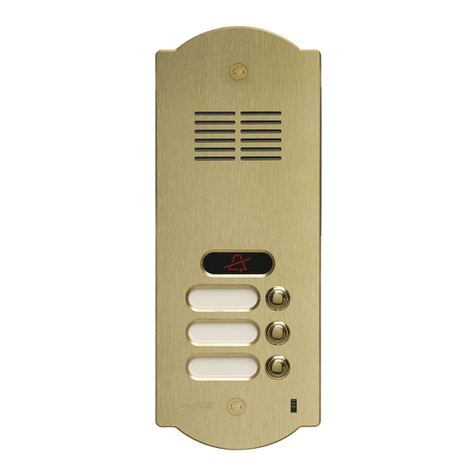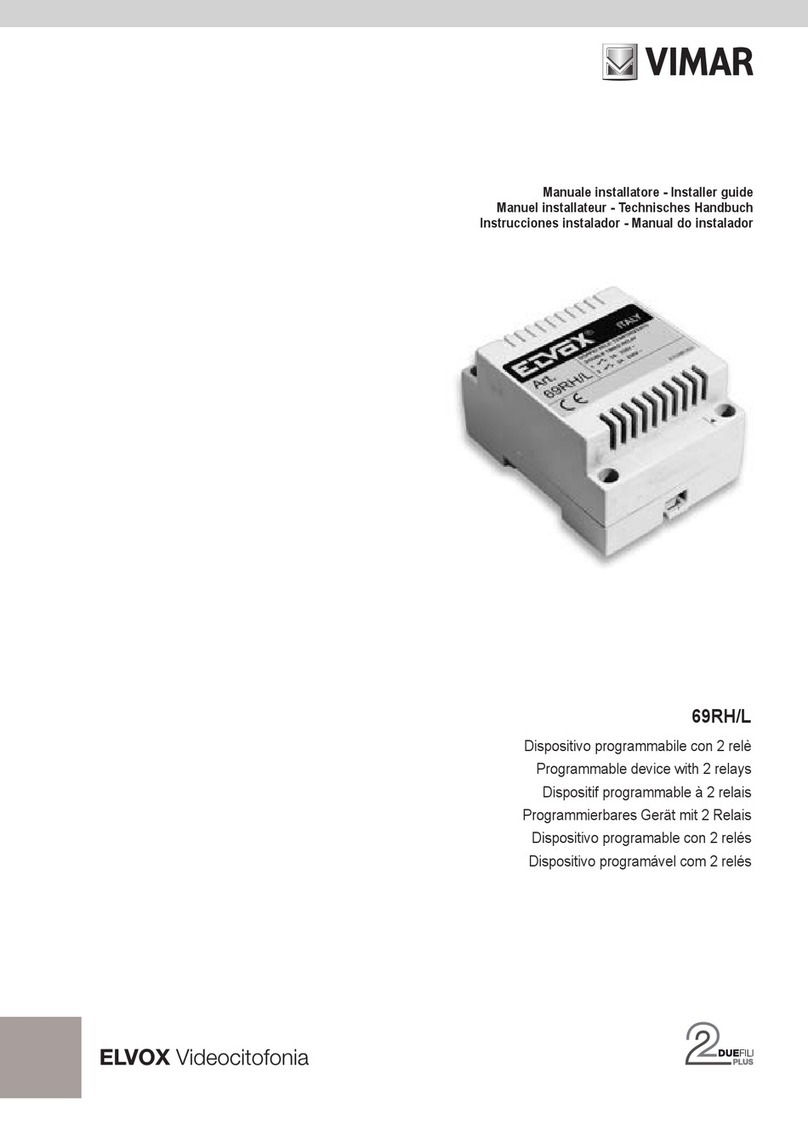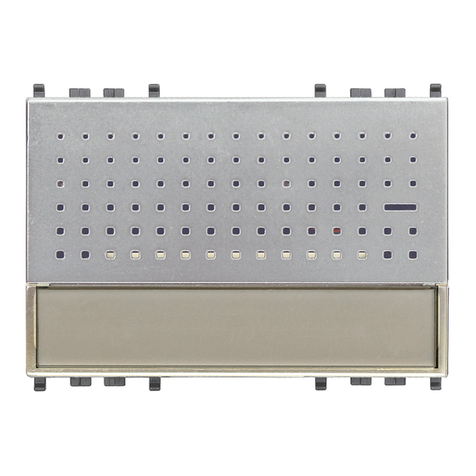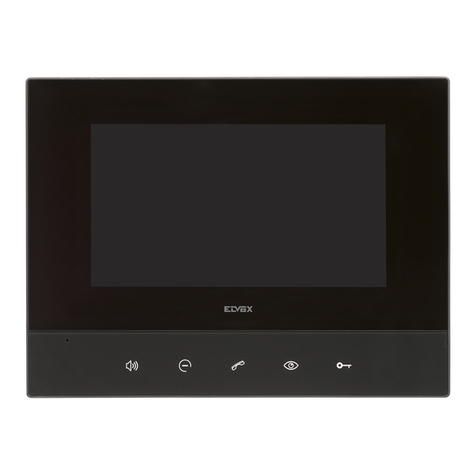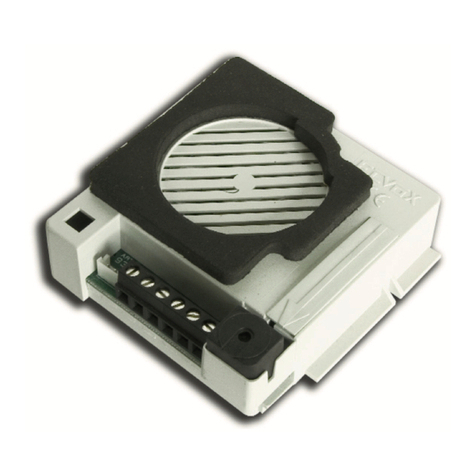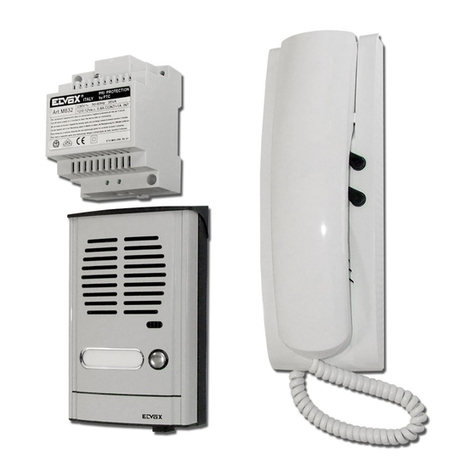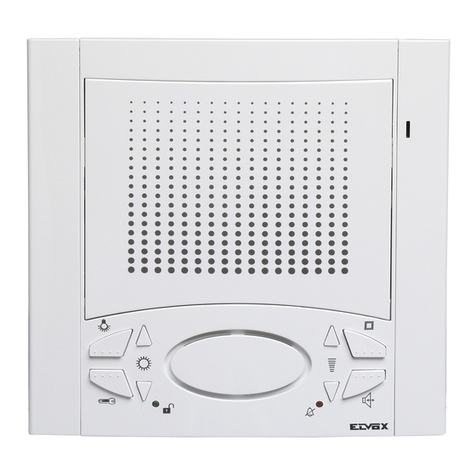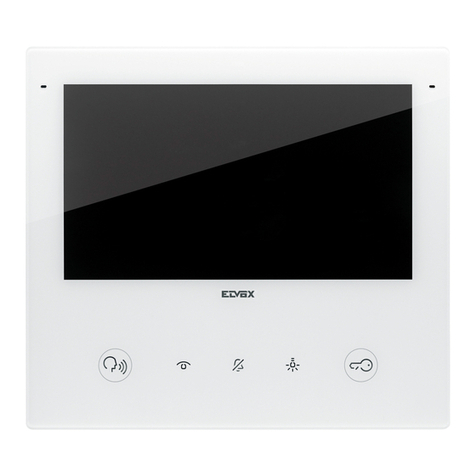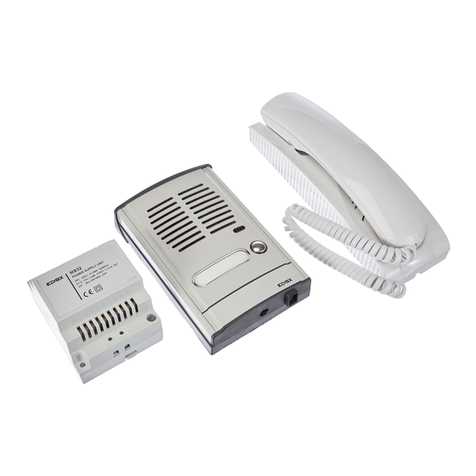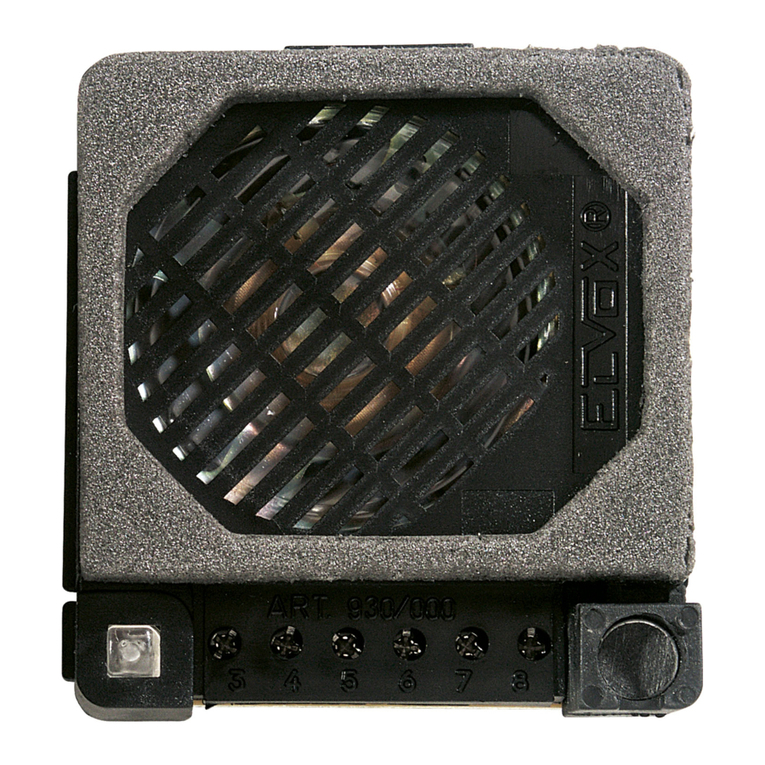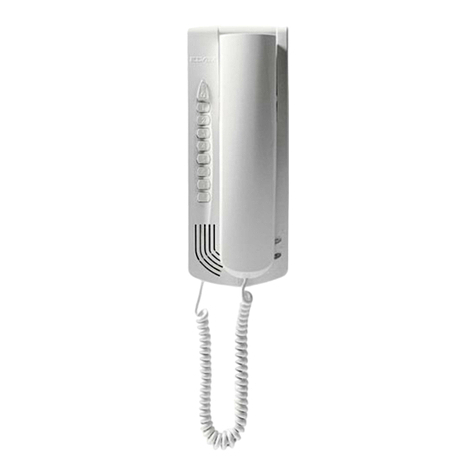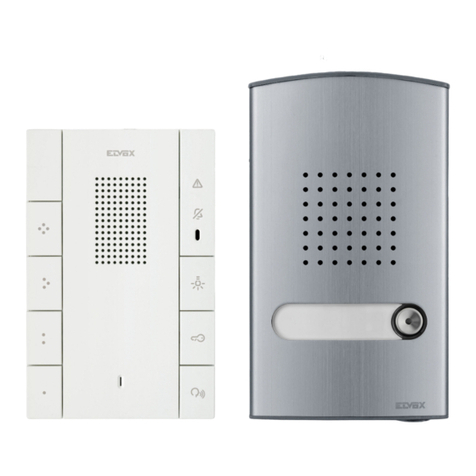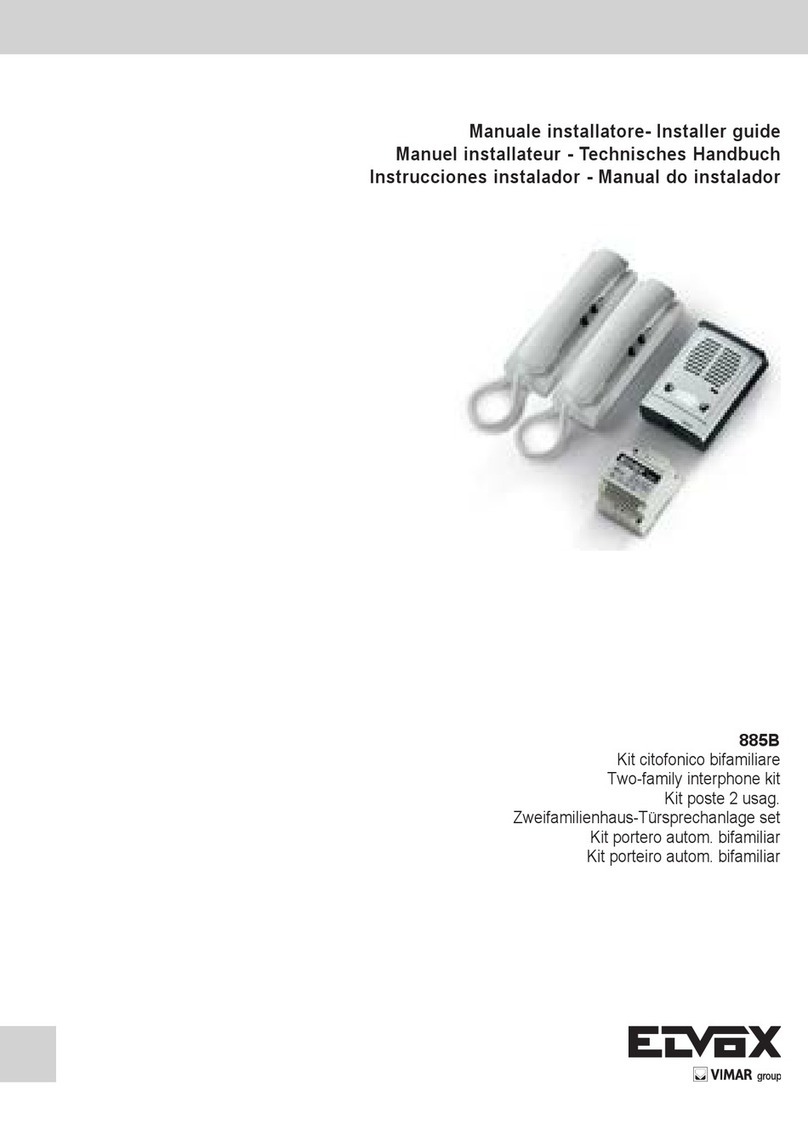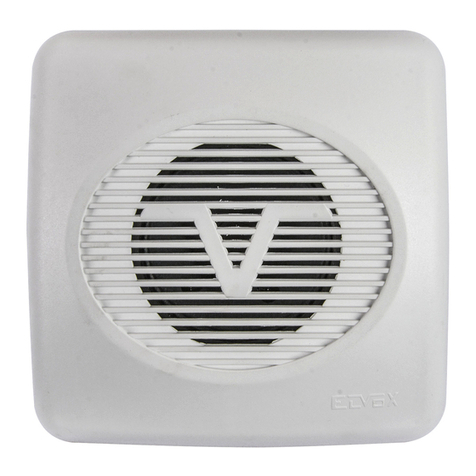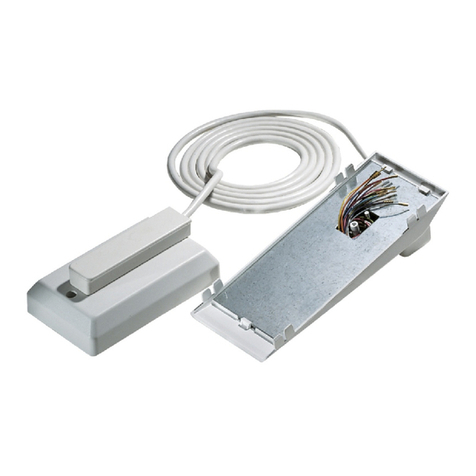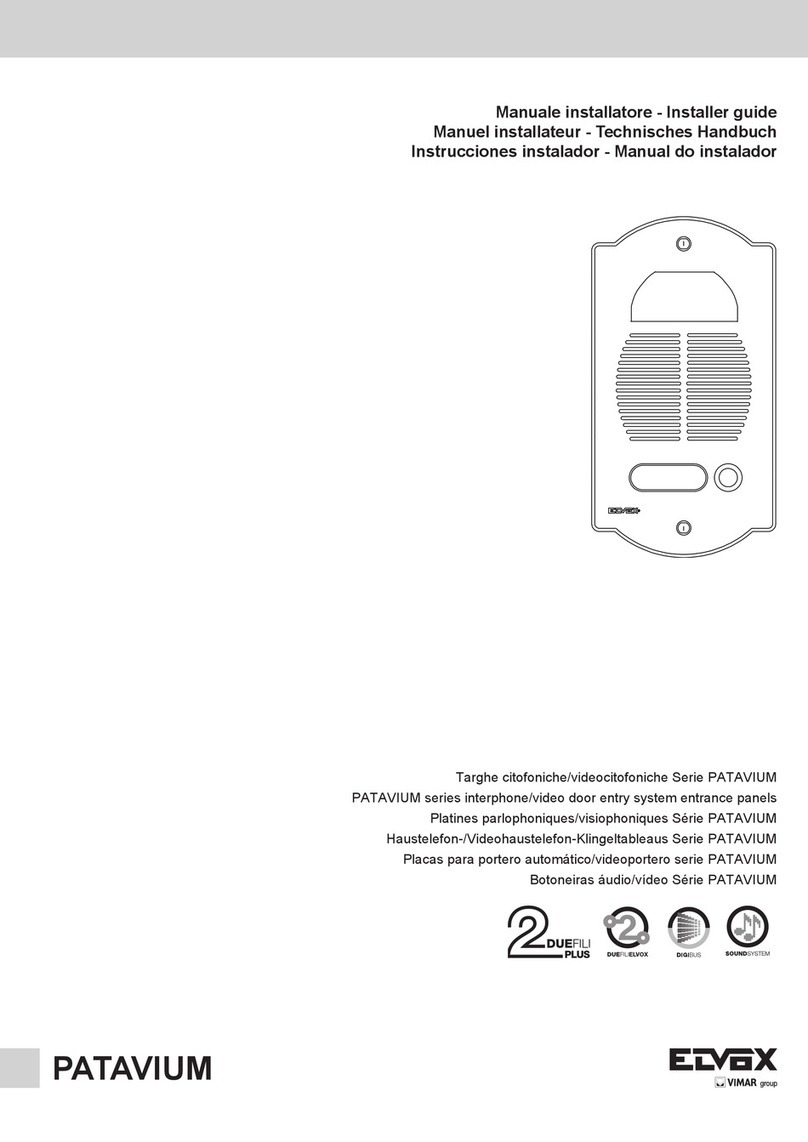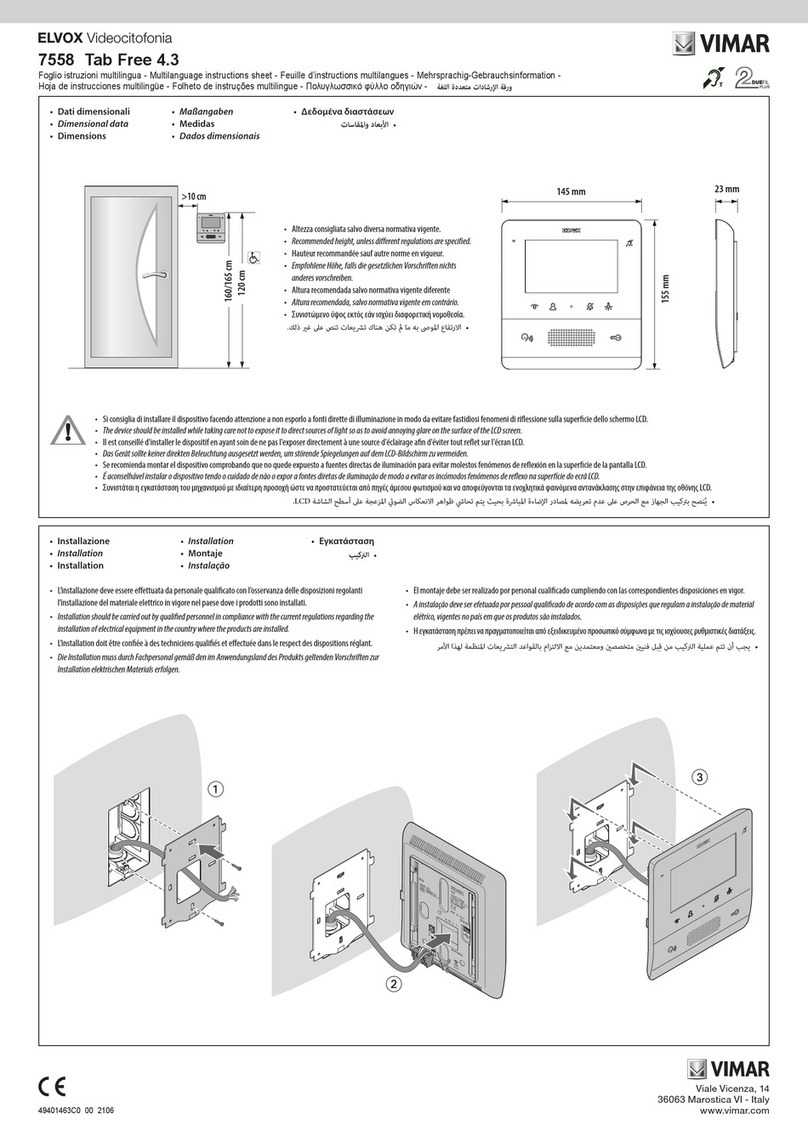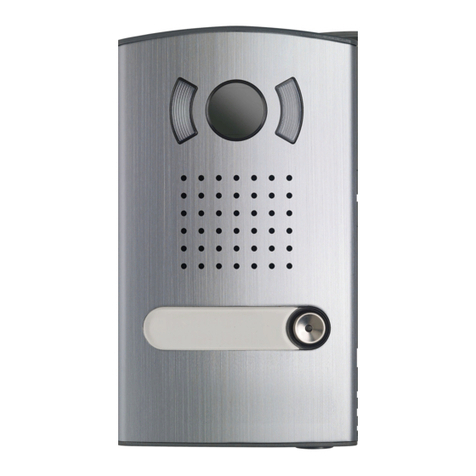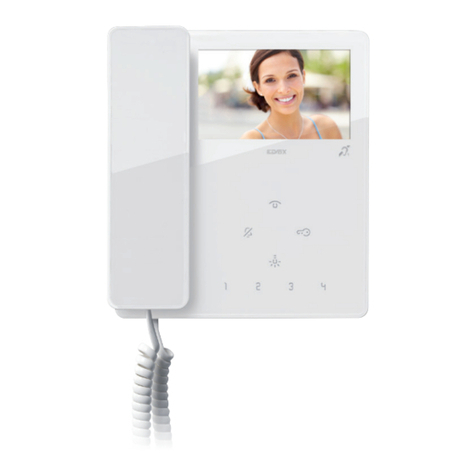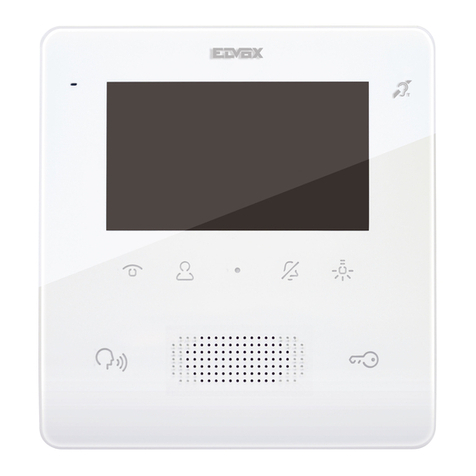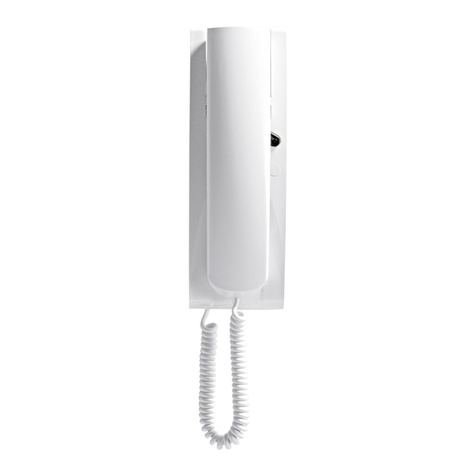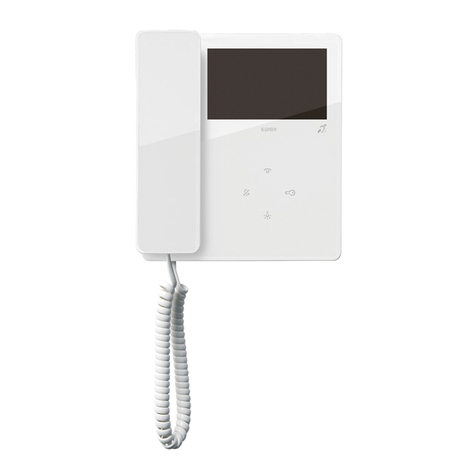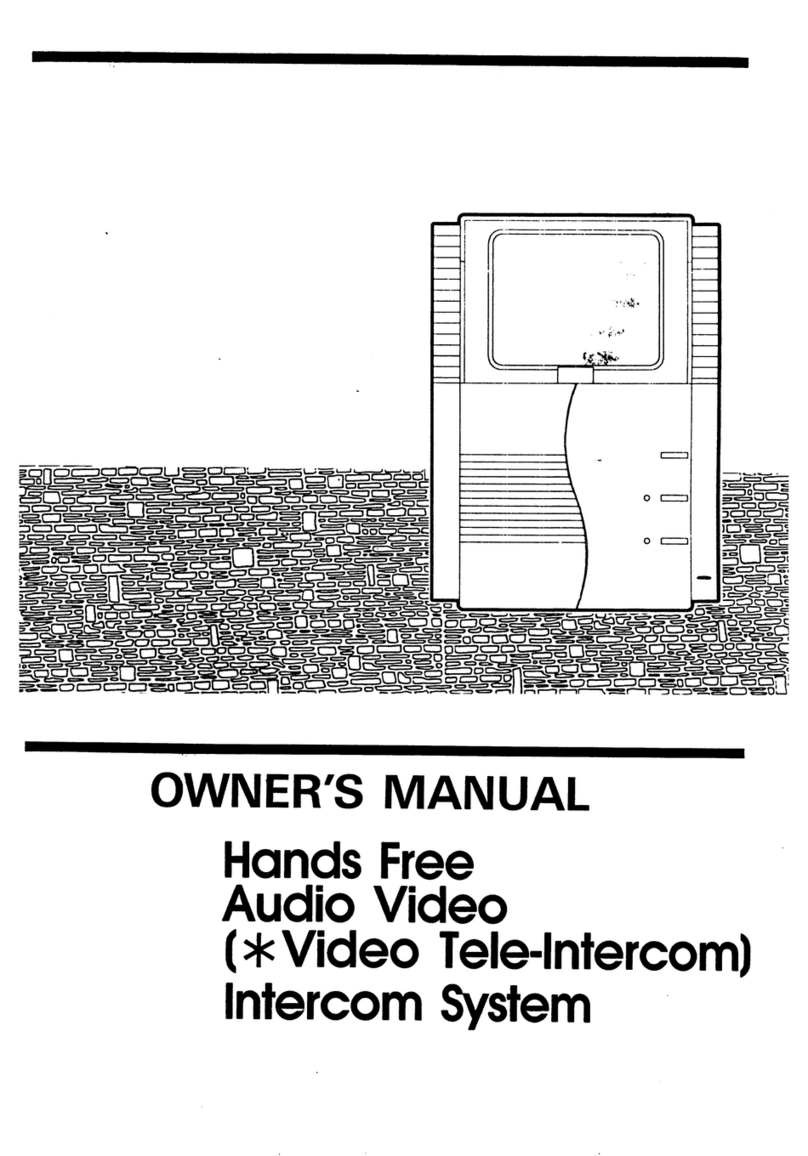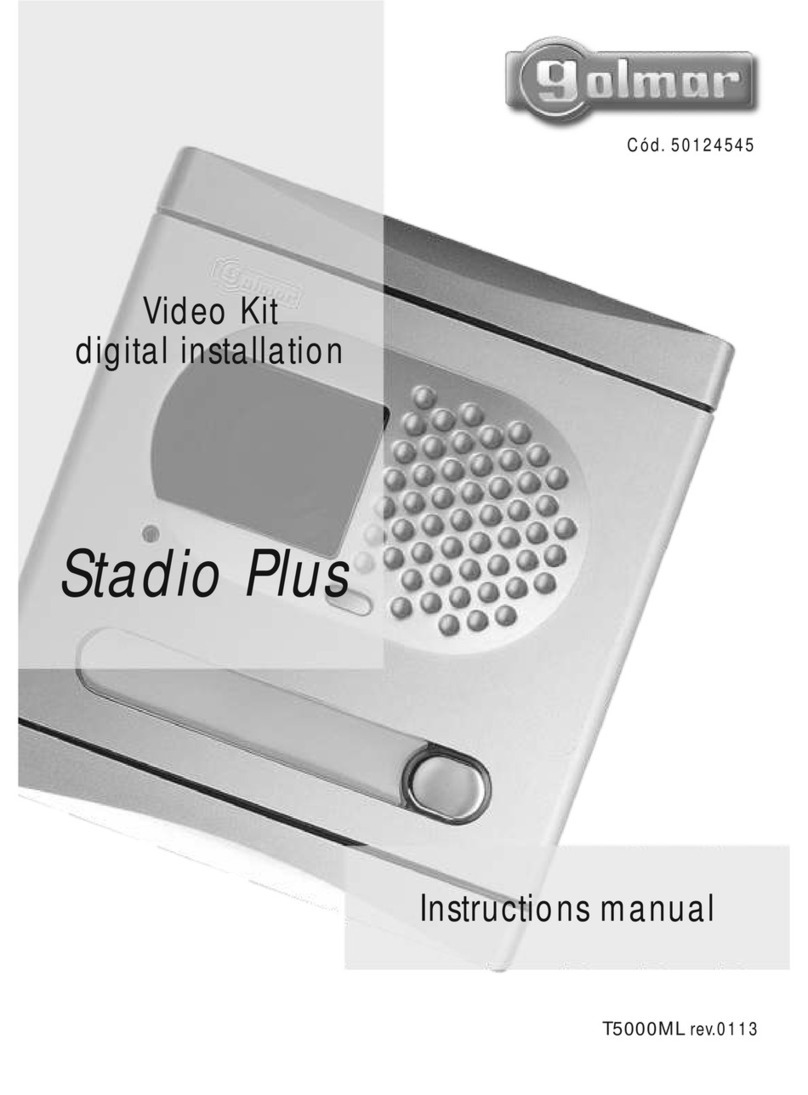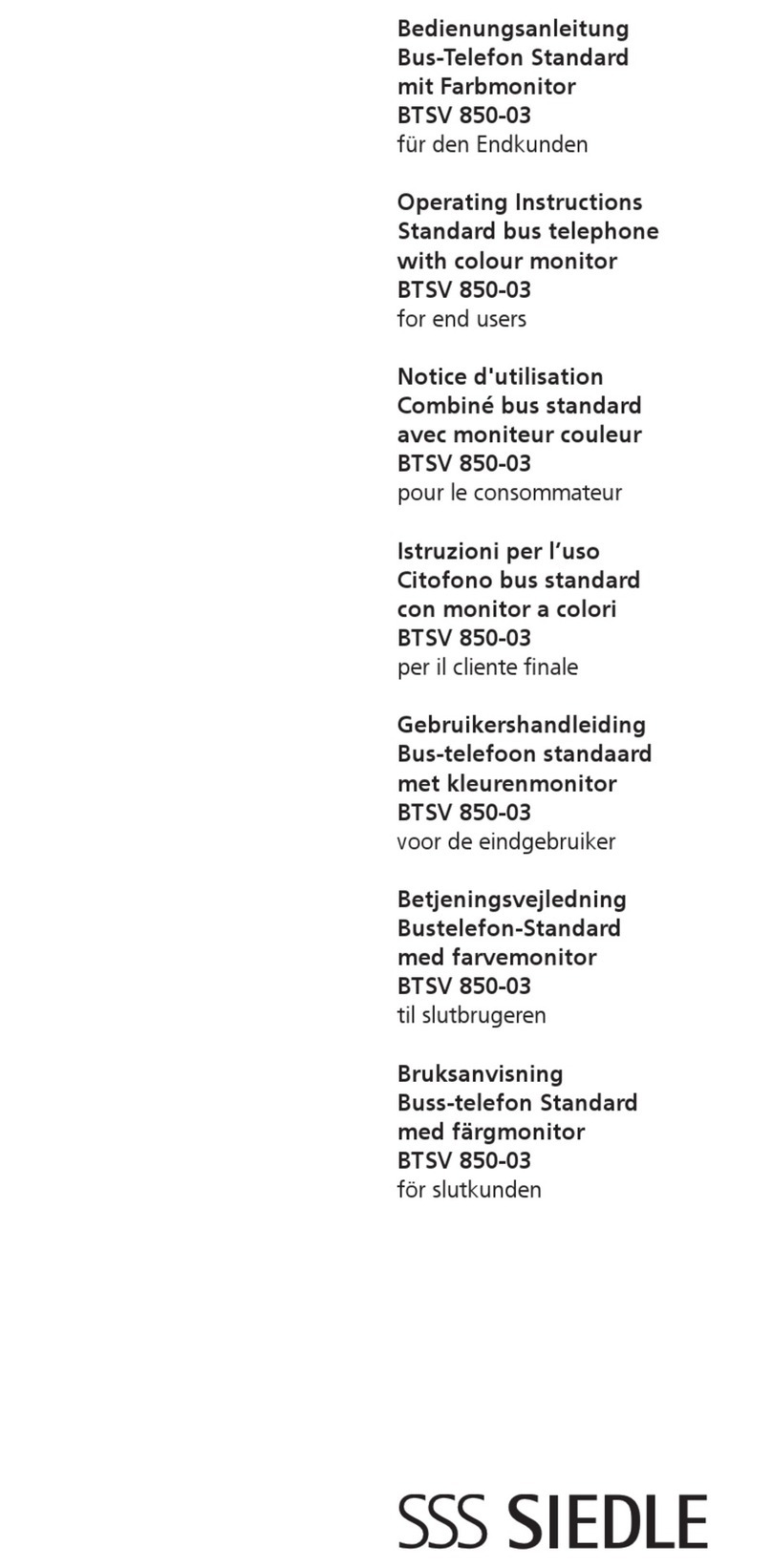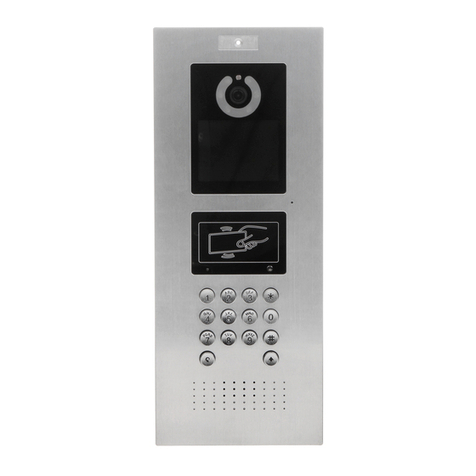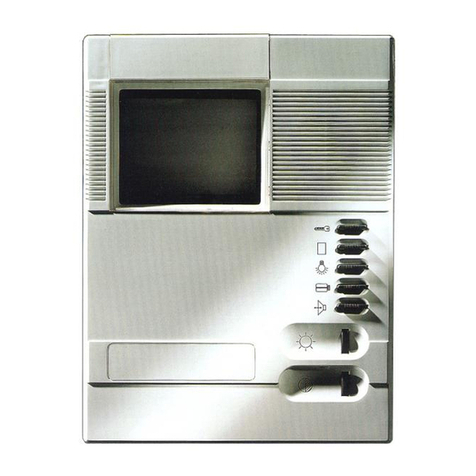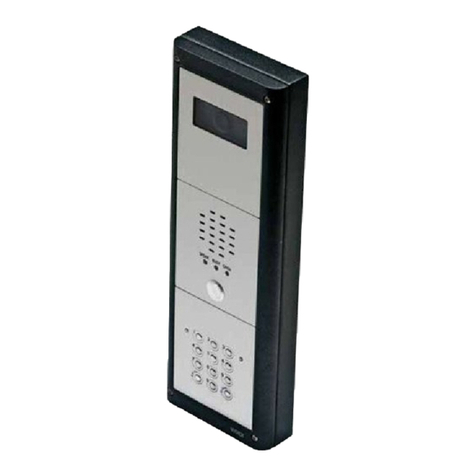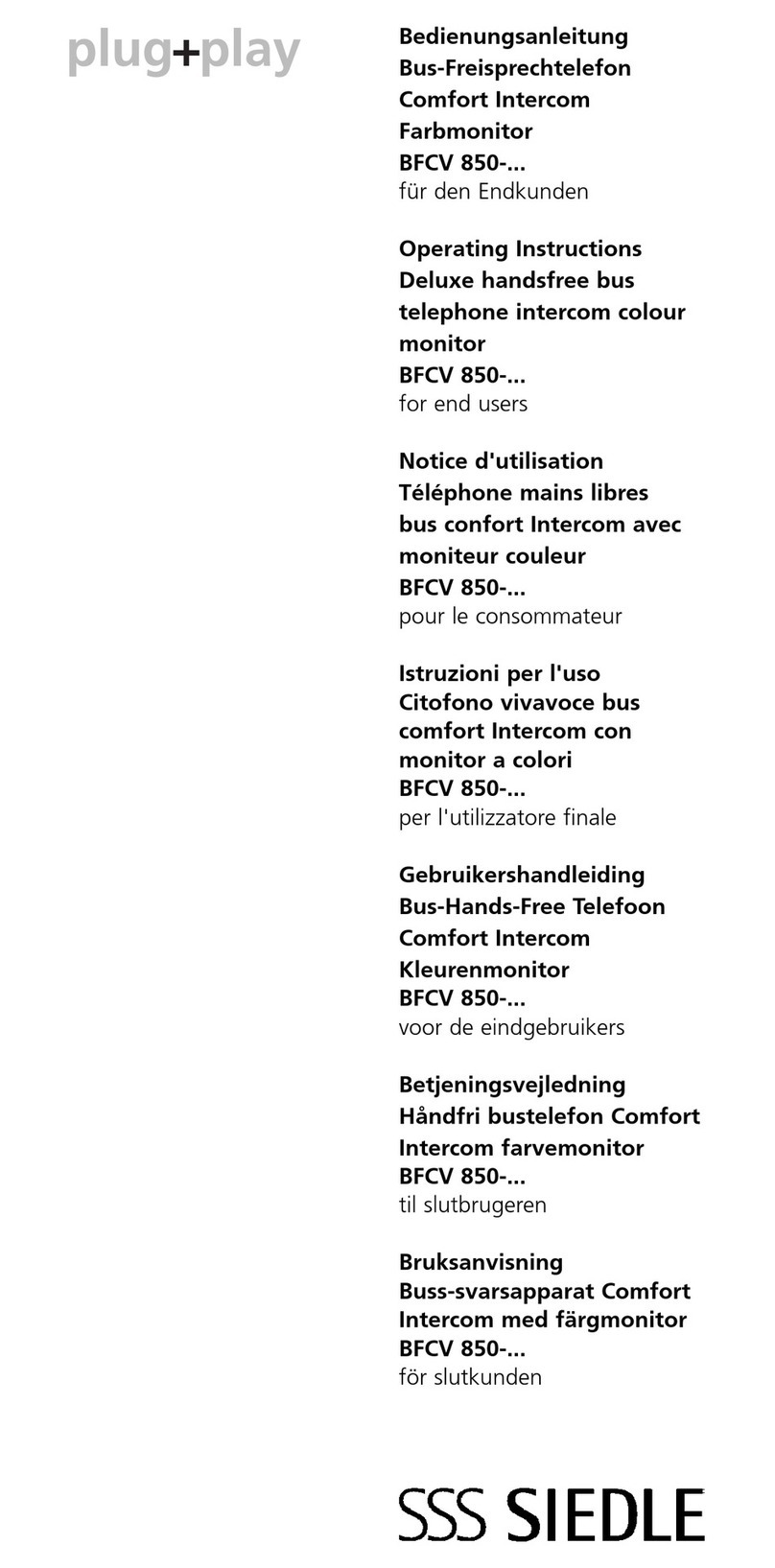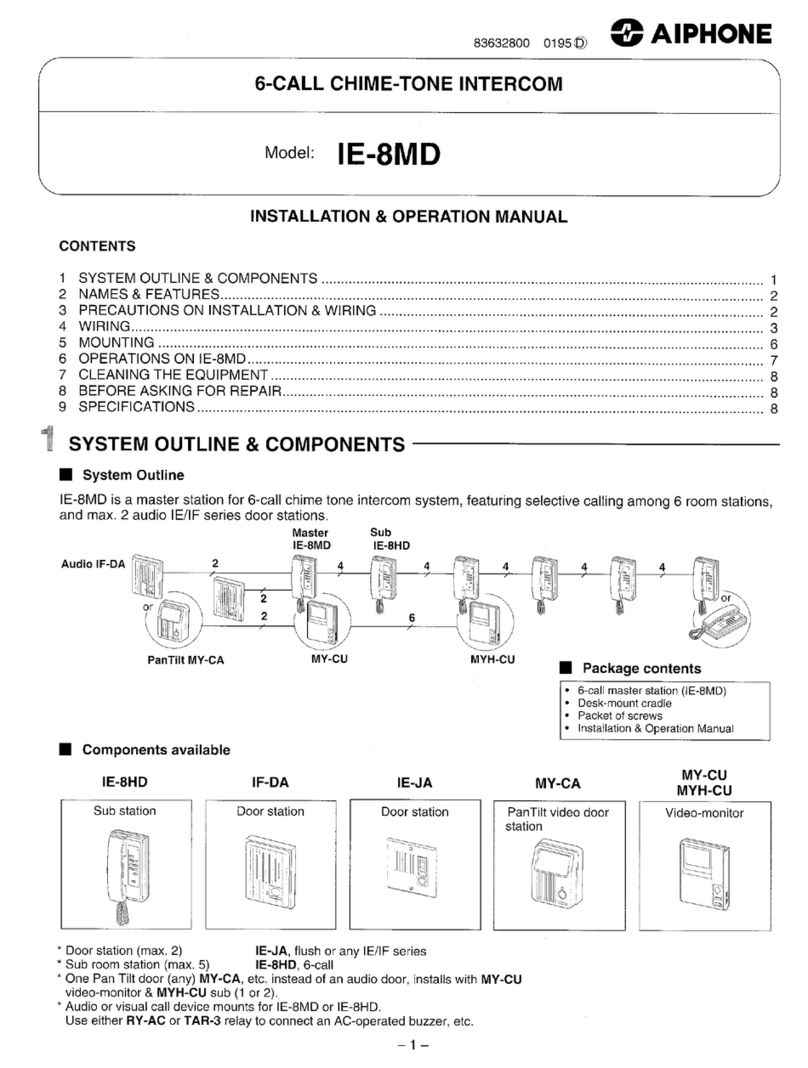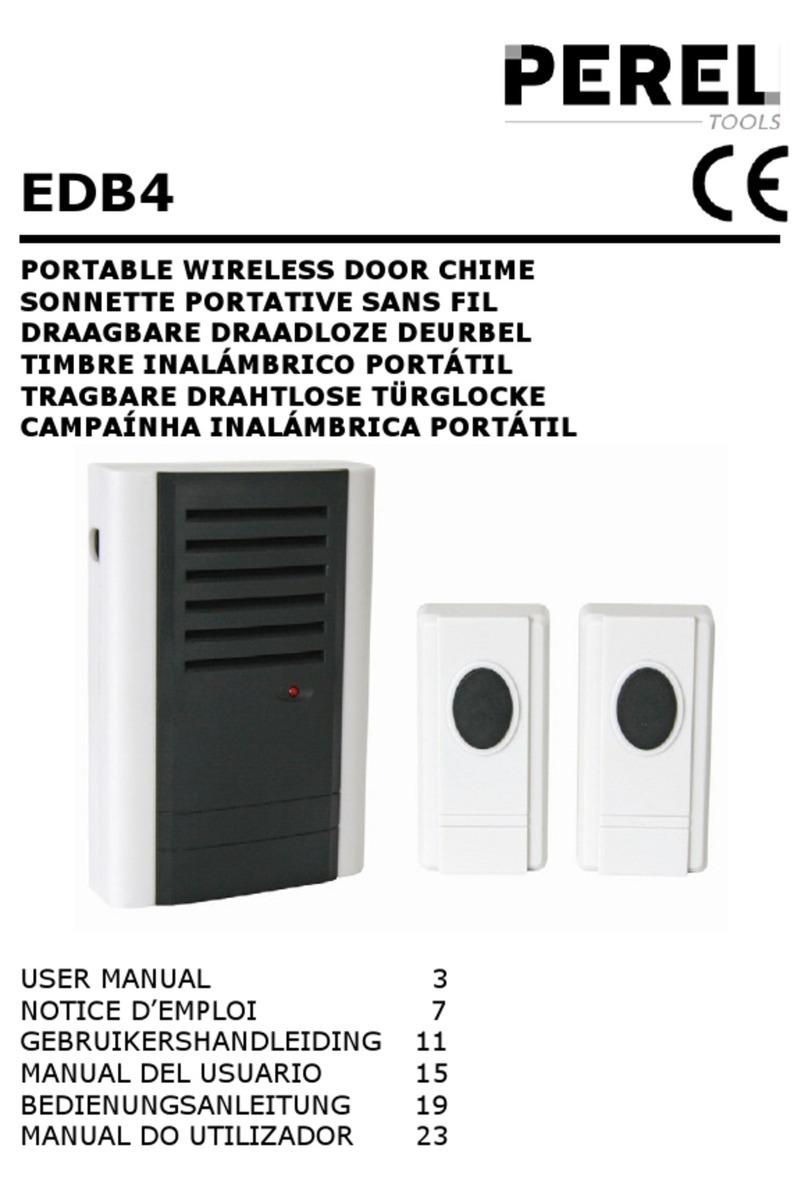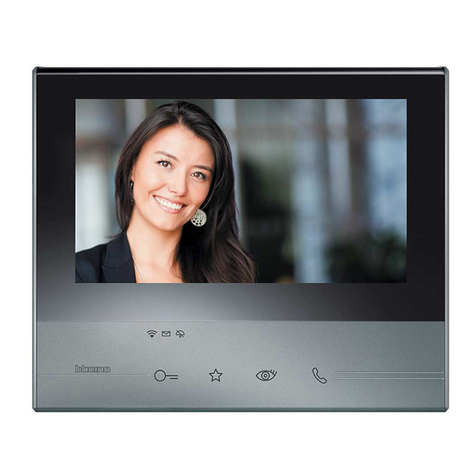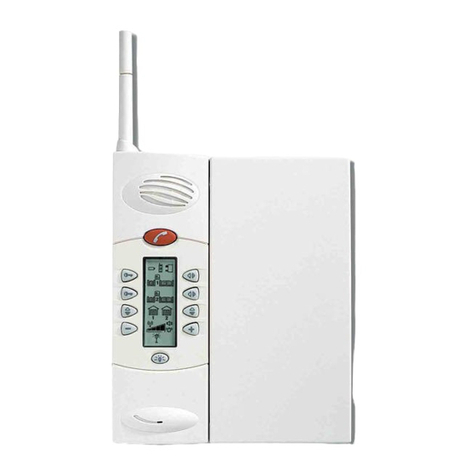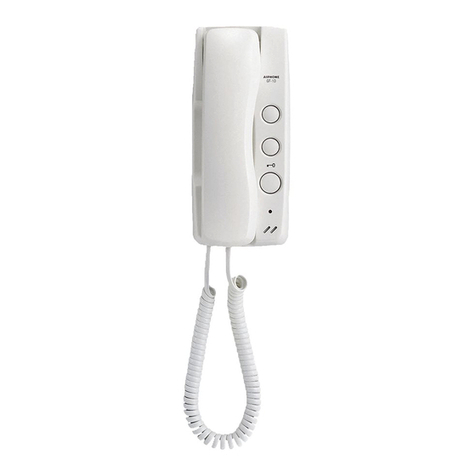
EL
Το εγχειρίδιο οδηγιών είναι διαθέσιμο για λήψη από την ιστοσελίδα
www.vimar.com
Επεξήγηση επαφών κλέμας και συνδέσεων
IN Είσοδος κεντρικής γραμμής Due Fili
OUT Έξοδος κεντρικής γραμμής Due Fili.
1A - 1B Έξοδος προς θυροτηλέφωνο/θυροτηλεόραση. Πρέπει να
χρησιμοποιείται πάντα (συνδεδεμένη).
2A - 2B Έξοδος προς θυροτηλέφωνο/θυροτηλεόραση. Εάν δεν
είναι συνδεδεμένη, βλ. περιγραφή για T2
3A - 3B Έξοδος προς θυροτηλέφωνο/θυροτηλεόραση. Εάν δεν
είναι συνδεδεμένη, βλ. περιγραφή για T3
4A - 4B Έξοδος προς θυροτηλέφωνο/θυροτηλεόραση. Εάν δεν
είναι συνδεδεμένη, βλ. περιγραφή για T4
TOUT Pin-strip 3 οδών. Ο βραχυκυκλωτήρας πρέπει να
αφαιρεθεί εάν στην επαφή κλέμας OUT η κεντρική γραμμή
συνεχίζεται. Πρέπει να συνδεθεί στα 100Ω (προεπιλογή)
ή στα 50Ω εάν το 692D είναι το τελευταίο της αλυσίδας.
T2 Pin-strip 2 οδών. Με θυροτηλέφωνο ή θυροτηλεόραση
συνδεδεμένη στις επαφές κλέμας 2A και 2B, ο
βραχυκυκλωτήρας πρέπει να αφαιρεθεί. Εάν στις επαφές
κλέμας δεν συνδέεται τίποτα, αφήστε τον βραχυκυκλωτήρα
συνδεδεμένο.
T3 Pin-strip 2 οδών. Με θυροτηλέφωνο ή θυροτηλεόραση
συνδεδεμένη στις επαφές κλέμας 3A και 3B, ο
βραχυκυκλωτήρας πρέπει να αφαιρεθεί. Εάν στις επαφές
κλέμας δεν συνδέεται τίποτα, αφήστε τον βραχυκυκλωτήρα
συνδεδεμένο.
T4 Pin-strip 2 οδών. Με θυροτηλέφωνο ή θυροτηλεόραση
συνδεδεμένη στις επαφές κλέμας 4A και 4B, ο
βραχυκυκλωτήρας πρέπει να αφαιρεθεί. Εάν στις επαφές
κλέμας δεν συνδέεται τίποτα, αφήστε τον βραχυκυκλωτήρα
συνδεδεμένο.
Περιγραφή
Το προϊόν κωδ. 692D είναι ένας παθητικός διανομέας ορόφου. Ο
διανομέας μπορεί να τοποθετηθεί μέσα σε κουτί διακλάδωσης ή πάνω
σε ράβδο DIN.
Το διάγραμμα σύνδεσης SI632 αναφέρεται σε εγκατάσταση
θυροτηλεόρασης με μία κεντρική γραμμή και διανομέα ορόφου. Άλλες
διαμορφώσεις περιγράφονται στις οδηγίες των μπουτονιέρων, των
ηλεκτρονικών μονάδων ή του εγχειριδίου Due li.
Χαρακτηριστικά
Το μέγιστο ρεύμα για κάθε έξοδο είναι 700mA (μπορεί να υποστηρίξει
δύο οθόνες παράλληλα με ταυτόχρονη ενεργοποίηση).
Θερμοκρασία λειτουργίας + 5 / + 40°C.
Διαστάσεις (Πλάτος x Ύψος x Βάθος): 60x82x21 mm
Συνδέσεις και ρυθμίσεις
Η σύνδεση εξόδου 1A και 1B είναι υποχρεωτική για την καλή λειτουργία
της εγκατάστασης.
Εάν οι γραμμές 2A - 2B, 3A - 3B, 4A - 4B είναι συνδεδεμένες, πρέπει να
αφαιρεθούν οι βραχυκυκλωτήρες T2,T3, T4 αντίστοιχα.
Εάν δεν χρησιμοποιούνται, αφήστε τους βραχυκυκλωτήρες T2, T3, T4
συνδεδεμένους.
Εάν στην επαφή κλέμας OUT η κεντρική γραμμή συνεχίζεται, αφαιρέστε
τον βραχυκυκλωτήρα TOUT.
Στο τελευταίο 692D της κεντρικής γραμμής (η επαφή κλέμας OUT δεν
χρησιμοποιείται), ο βραχυκυκλωτήρας TOUT πρέπει να συνδεθεί στα
100 εάν χρησιμοποιείτε καλώδιο Elvox, στα 50 εάν χρησιμοποιείτε
καλώδιο CAT5 με συνδεδεμένα ζεύγη.
Κανονισμοί εγκατάστασης
Η εγκατάσταση πρέπει να πραγματοποιείται από εξειδικευμένο προσωπικό
σύμφωνα με τους κανονισμούς που διέπουν την εγκατάσταση του
ηλεκτρολογικού εξοπλισμού και ισχύουν στη χώρα όπου εγκαθίστανται
τα προϊόντα.
Συμμόρφωση με τα πρότυπα
Οδηγία EMC
Πρότυπα EN 61000-6-1 και EN 61000-6-3.
Κανονισμός REACh (ΕΕ) αρ. 1907/2006 – Άρθρο 33. Το προϊόν μπορεί
να περιέχει ίχνη μολύβδου.
ΑΗΗΕ - Πληροφορίες για τους χρήστες
Το σύμβολο διαγραμμένου κάδου που αναγράφεται στη συσκευή
ή στη συσκευασία υποδεικνύει ότι το προϊόν πρέπει να συλλέγεται
ξεχωριστά από τα υπόλοιπα απόβλητα στο τέλος της ωφέλιμης
διάρκειας ζωής του. Για τον λόγο αυτό, ο χρήστης πρέπει να παραδίδει
τις συσκευές που έχουν φτάσει στο τέλος της διάρκειας ζωής τους στα
ειδικά δημοτικά κέντρα διαφοροποιημένης συλλογής αποβλήτων ειδών
ηλεκτρικού και ηλεκτρονικού εξοπλισμού. Εκτός από την αυτόνομη
διαχείριση, είναι δυνατή η δωρεάν παράδοση της συσκευής προς
απόρριψη στον διανομέα, κατά την αγορά καινούριας, αντίστοιχης
συσκευής. Στους διανομείς ηλεκτρονικών προϊόντων τουλάχιστον με
καταστήματα πώλησης 400 m2, μπορείτε επίσης να παραδίδετε δωρεάν,
χωρίς υποχρέωση αγοράς, ηλεκτρονικά προϊόντα προς απόρριψη με
διαστάσεις κάτω από 25 cm. Η κατάλληλη διαφοροποιημένη συλλογή
με σκοπό τη μετέπειτα ανακύκλωση, επεξεργασία και φιλική προς το
περιβάλλον απόρριψη της συσκευής συμβάλλει στην αποφυγή πιθανών
αρνητικών επιπτώσεων για το περιβάλλον και την υγεία, καθώς και στην
εκ νέου χρήση ή/και ανακύκλωση των υλικών από τα οποία αποτελείται
η συσκευή.
8
692D
